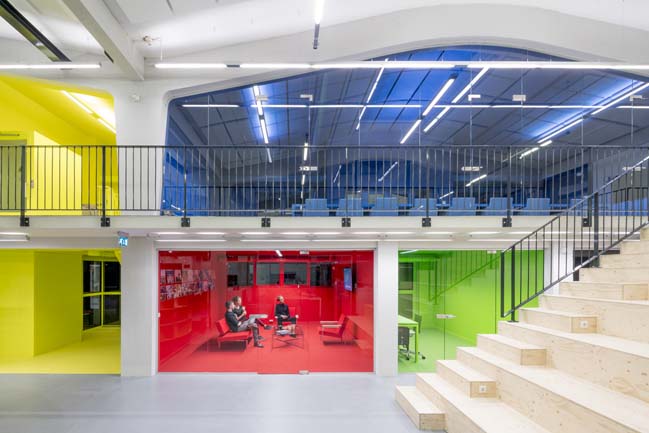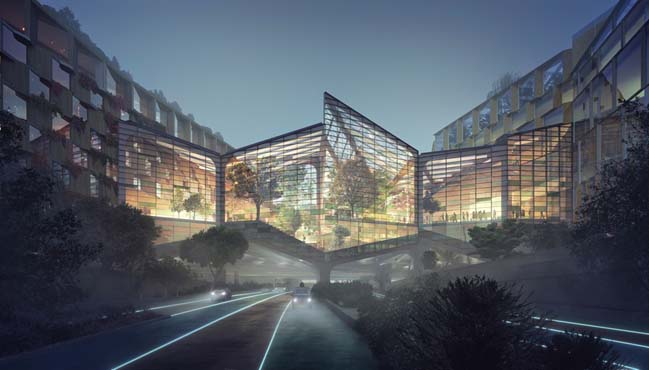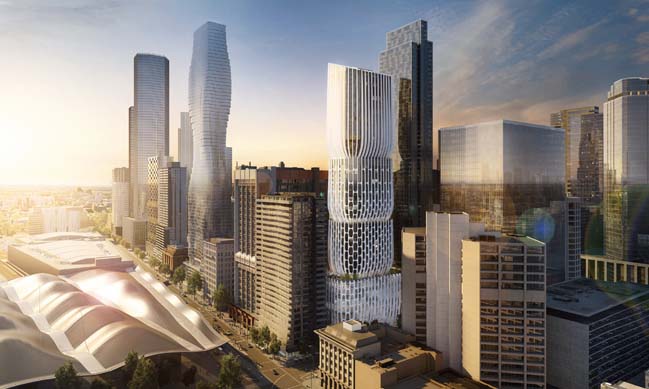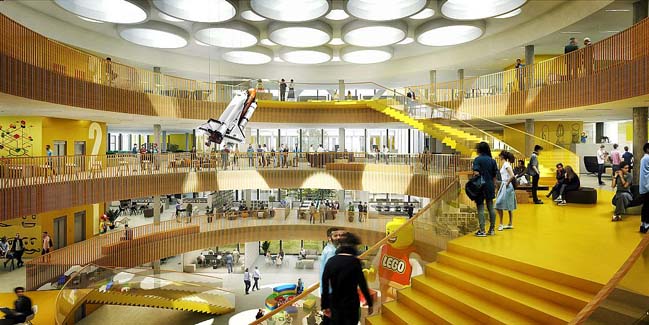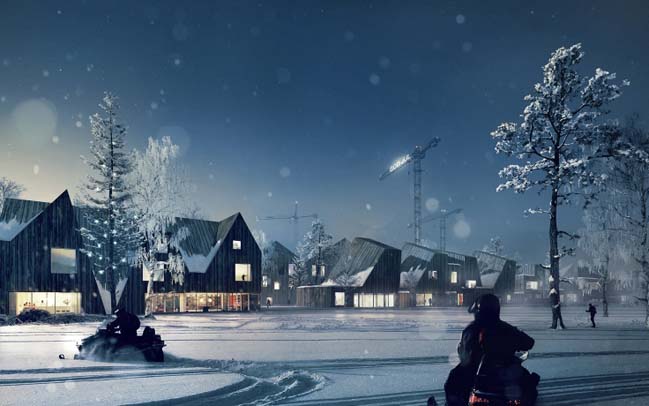07 / 21
2016
Paradise City is a 9,800 sqm entertainment complex which sits as the centre piece of a new tourist hub in Seoul that was designed by the netherlands-based architecture firm MVRDV.
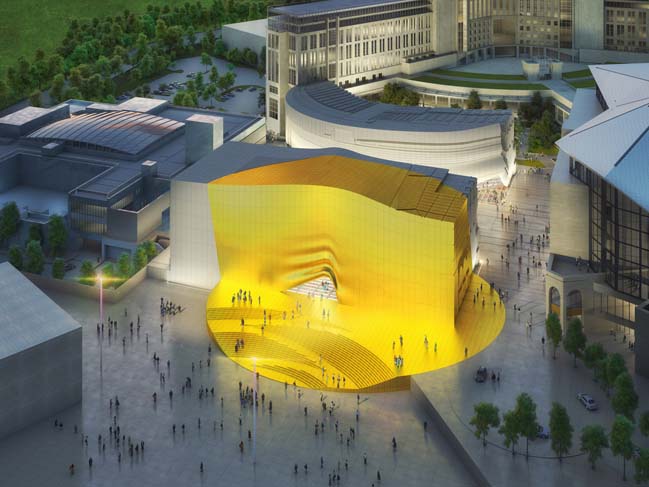
Architect: MVRDV
Location: Seoul, South Korea
Year: 2015+
Co-Architect: GANSAM Architects & Partners, Korea
Facade Consultant: VS-A Group Ltd
Programme & Size: 3.600m2 retail and 6.200m2 night club
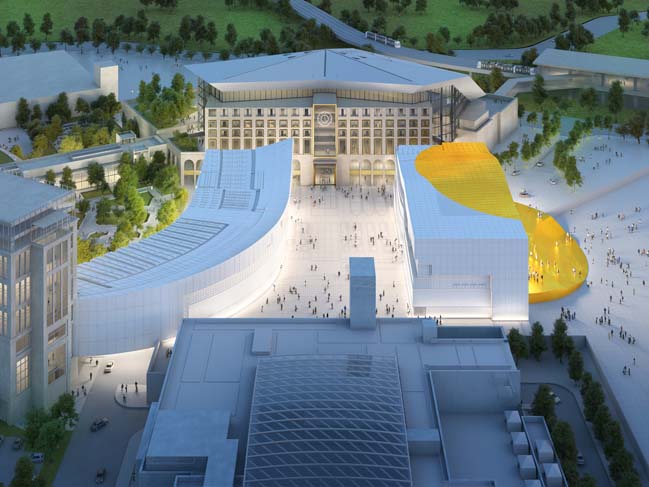
From the architects: The sibling buildings, the Sandbox and Nightclub, share an architectural language; both becoming an echo of their family, the immediate surrounding buildings. A golden spot floating over the building and the plaza in front boldly marks the Nightclub entrance; a blast of light before the contrasting dark interior. The concrete monolithic forms have no visible windows to the outside world, concealing an introverted shopping centre and nightclub; segments of façade rotate open in their place. The question how to design an interesting façade whilst only offering glimpses into the building was solved by echoing the surroundings and then manipulate them further. Whilst maintaining their mystery, these structures connect to the urban plan, lifting up at points like a draping curtain, opening up to visitors. As a result, the massive concrete forms distort, suddenly taking on a more fluid aesthetic and becoming softly creased.
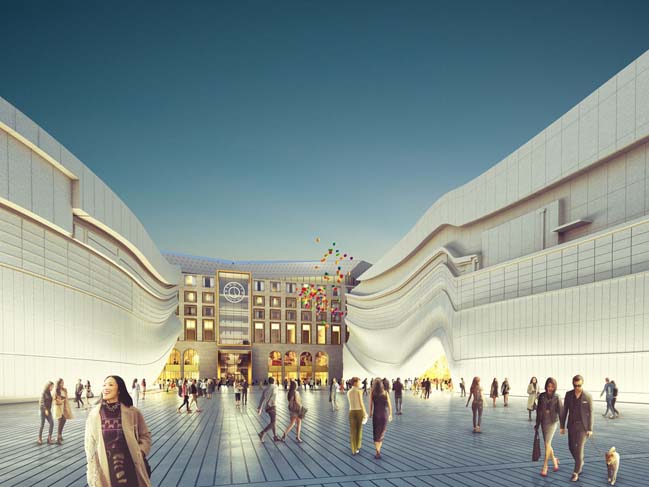
"The project takes two simple volumes, which create a new urban space. These masses then take an imprint of the facades around the site, stretching over the two buildings. Thus adapting themselves to the given environment, accepting these conditions as a sine qua non," explains MVRDV co-founder Winy Maas. "The buildings are opened by lifting them like a curtain, unravelling their interior. Then, to top it off is the golden spot, marking the entrance like a sunbeam, making its presence known even from the air and the landing planes at Incheon airport."

The 3.600m2 Sandbox, a retail complex, sweeps around to connect to the casino and offers direct access to visitors. Whilst the Nightclub of 6.200m2 sits adjacent to it, maintaining its rectilinear position, and hosts not only a nightclub but also a water club and sky-garden on the upper floor . Party goers are led into the structure up a golden tribune, with an integrated ramp, from the drop-off area and through the centre of the sun spot where the gold wall is lifted, creating an opening through which to enter. Paradise City provides the spectacle that entertainment architecture calls for, yet at the same time balances it with a certain calm simplicity.

The urban platform of Paradise City is raised, sitting above service spaces and an underground carpark. Glass flooring in both the Nightclub and Sandbox reveal the inner-workings of the site, the exits and entries of a site which is in a constant state of transition.

At just a 10 minute walk from Incheon airport, the new complex comprises of four main zones; a hotel with a casino and convention facilities; the Plaza, with a boutique hotel, food-court, retail space and galleries; a spa; and the Entertainment Square, with retail spaces and a nightclub. The complex, which will be completed in time for the 2018 winter Olympic games, is purposed for tourists to the city and will have a direct mono-rail link to the airport. The project has already attracted big names in Korea’s social scene, with actor Kim Soo-hyun now the ambassador of the Paradise City development.

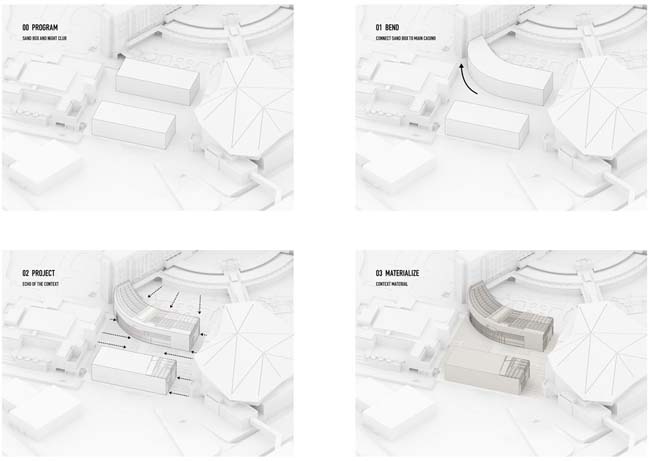
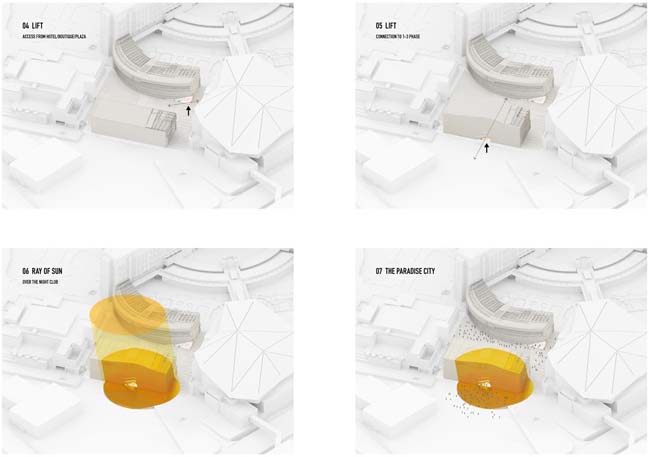
Entertainment Complex in Seoul by MVRDV
07 / 21 / 2016 Paradise City is an entertainment complex which sits as the centre piece of a new tourist hub in Seoul that was designed by the netherlands-based architecture firm MVRDV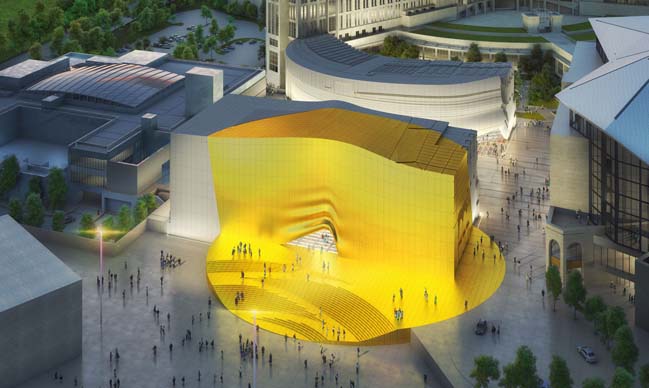
You might also like:
Recommended post: VicRoads building by Gray Puksand
